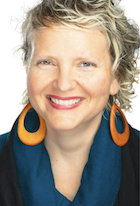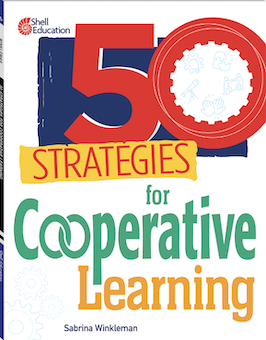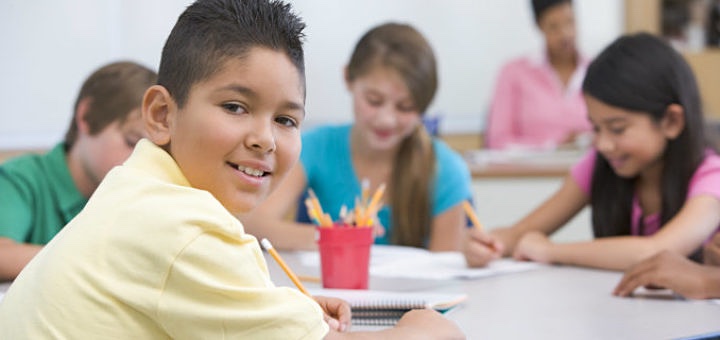By Sabrina Winkleman

 “How do I add social and emotional learning (SEL) to my already full day?” I am often asked this question when talking about whole child approaches in the classroom.
“How do I add social and emotional learning (SEL) to my already full day?” I am often asked this question when talking about whole child approaches in the classroom.
This question usually comes from a place of overwhelm, given the many responsibilities educators must navigate daily. However, in practice, centering SEL in the classroom is not “one more thing” that teachers must do in their classrooms. Integrating SEL as a whole child approach requires reflecting and building on the small moves we make every day to connect to ourselves and to our students.
Each year as a public school classroom teacher, I was greeted by a multi-faceted group of culturally and linguistically diverse students. My goal was to co-create a learning environment shaped by belonging and dignity. Having experienced bullying in school, I knew the importance of school climate and its relationship to academic growth and mental health.
The learners in my classroom thrived when we took the time to model, co-create, and reflect on our routines together. Creating community agreements and practicing our ways of interacting with each other connected us to ourselves and to each other.
Reflection is the key to connection
As educators, we must lean into the power of pausing to reflect. It is in this reflection that we connect honestly with our practice and authentically with our students. The challenge is slowing down within the often fast-paced environment of our schools. We must consider our nervous systems and our ability to respond, not react, to our lives.
First, we must develop self-awareness of our emotions and our abilities to experience and process them. Do you have practices to check-in with yourself at the beginning of the day and to set intentions for the ways you want to show up for yourself and your school community? Do you use these same practices with your students?
Second, we must develop accountability moves to reflect and adjust our intentions throughout our days. Can you dedicate two to three minutes for students to reflect and adjust their intentions in the middle of a lesson? How can you join them?
Third, we must recognize how this dedicated time to reflect and adjust depends on our sense of belonging, our collaborative problem-solving, and our sense of curiosity in the learning environment. These are all transformative SEL skills that deepen the more we explicitly and intentionally devote time to them.
When we expand reflecting and adapting to how we are connecting to ourselves and to one another, we create learning environments that contain the conditions for engagement, academic growth, joy, and well-being for everyone. The more we reflect to connect, the more we expand a whole child and adult approach to learning.
My book 50 Strategies for Cooperative Learning unpacks each of these components of teaching with a whole child and adult approach through the partnership of transformative SEL with cooperative learning. I’ve gathered strategies aligned to the Collaborative for Academic, Social, and Emotional Learning (CASEL)’s transformative SEL framework and positioned them to support any content you develop for a cooperative learning experience.
Every teacher uses strategies for connecting and developing relationships with students. Developing a successful whole child approach often relies on deepening these strategies more explicitly and intentionally. In my book, I provide an overview of teaching with a wholeness lens and five SEL strategy groups to specifically integrate transformative SEL with cooperative learning.
Strategies to use every day
Here are three potent ways to intentionally and explicitly integrate a wholeness lens into your classroom every day.
1. Name It
Determine which one of the transformative SEL competencies (self-awareness, self-management, social awareness, relationship skills, responsible decision-making) best aligns with your cooperative learning content.
2. Activate It
Before your lesson, activate the competency you’ve chosen by brainstorming with students how the competency connects to the academic content you are learning today.
3. Reflect on It
After the lesson, make time to reflect with students on how the competency impacted their abilities to meet the academic goals and objectives. How might they use the competency differently next time? What adjustments did they make during the lesson?
All of us deserve wholeness
When we shape our teaching practice around wholeness, we intentionally deepen the presence of transformative SEL in our lives. This deepening allows us to connect to ourselves and to our students. Connection honors our belonging and dignity in this world, and in this way we honor our collective humanity and experience growth and well-being.

 Sabrina Winkleman, M.Ed. (she/her) is the author of 50 Strategies for Cooperative Learning (Shell Education, 2025). She is a national speaker and professional learning facilitator for equitable whole child and adult policy, research, and practice. Her work in education spans nearly two decades, from classroom teacher for nearly a decade to instructional specialist to social and emotional learning (SEL) specialist at district and state levels.
Sabrina Winkleman, M.Ed. (she/her) is the author of 50 Strategies for Cooperative Learning (Shell Education, 2025). She is a national speaker and professional learning facilitator for equitable whole child and adult policy, research, and practice. Her work in education spans nearly two decades, from classroom teacher for nearly a decade to instructional specialist to social and emotional learning (SEL) specialist at district and state levels.
Sabrina holds a Master of Education from the College of St. Scholastica with a focus on culturally responsive practice and adult transformative SEL (tSEL). She served as SEL Specialist for the Minnesota Department of Education before joining the nonprofit education organization World Savvy as a Professional Learning Facilitator.










